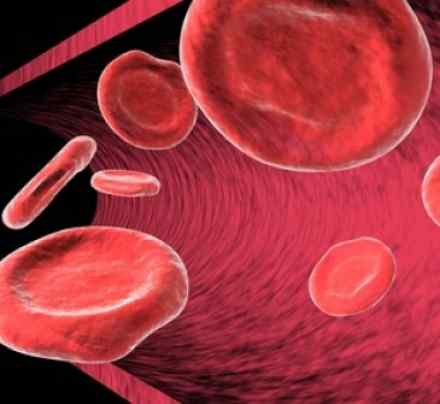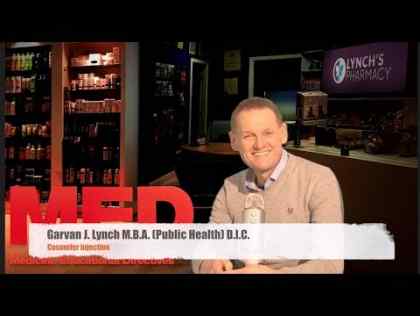
What is it?
- Anaemia is a condition in which you don't have enough healthy red blood cells to carry adequate oxygen to your tissues. If you have anemia, you probably feel tired a lot.
- There are many forms of anemia, each with its own cause. Anaemia can be temporary or long term, and it can range from mild to severe.
- See your doctor if you suspect you have anaemia, because anaemia can be a sign of serious illnesses. Treatments for anemia range from taking supplements to undergoing medical procedures.
Symptoms
- Fatigue
- Pale skin
- A fast or irregular heartbeat
- Shortness of breath
- Chest pain
- Dizziness
- Cognitive problems
- Cold hands and feet
- Headache
Initially, anaemia can be so mild it goes unnoticed. But signs and symptoms increase as anaemia worsens.
Causes
Blood consists of a liquid called plasma and cells. Floating within the plasma are three types of blood cells:
- White blood cells (leukocytes). These blood cells fight infection.
- Platelets. These blood cells help your blood clot after a cut.
- Red blood cells (erythrocytes). These blood cells carry oxygen from your lungs, via your bloodstream, to your brain and the other organs and tissues. Your body needs a supply of oxygenated blood to function. Oxygenated blood helps give your body its energy and your skin a healthy glow.
Red blood cells contain haemoglobin — a red, iron-rich protein that gives blood its red color. Haemoglobin enables red blood cells to carry oxygen from your lungs to all parts of your body, and to carry carbon dioxide from other parts of the body to your lungs so that it can be exhaled.
Most blood cells, including red blood cells, are produced regularly in your bone marrow — a red, spongy material found within the cavities of many of your large bones. To produce haemoglobin and red blood cells, your body needs iron, other minerals, protein and vitamins from the foods you eat.
Causes of common types of anaemia
When you're anaemic, your body produces too few healthy red blood cells, loses too many of them or destroys them faster than they can be replaced. Common types of anaemia and their causes include:
- Iron deficiency anaemia. This common form of anaemia affects about 1 to 2 percent of adults. The cause is a shortage of the element iron in your body. Your bone marrow needs iron to make haemoglobin. Without adequate iron, your body can't produce enough haemoglobin for red blood cells. The result is iron deficiency anaemia.
- Vitamin deficiency anaemias. In addition to iron, your body needs folate and vitamin B-12 to produce sufficient numbers of healthy red blood cells. A diet lacking in these and other key nutrients can cause decreased red blood cell production. Additionally, some people are unable to effectively absorb B-12.
- Anaemia of chronic disease. Certain chronic diseases — such as cancer, HIV/AIDS, rheumatoid arthritis, Crohn's disease and other chronic inflammatory diseases — can interfere with the production of red blood cells, resulting in chronic anaemia. Kidney failure also can be a cause of anaemia.
- Aplastic anemia. This very rare, life-threatening anemia is caused by a decrease in the bone marrow's ability to produce all three types of blood cells — red blood cells, white blood cells and platelets. Many times, the cause of aplastic anemia is unknown, but it's believed to often be an autoimmune disease.
- Anaemias associated with bone marrow disease. A variety of diseases, such as leukemia and myelodysplasia, a preleukemic condition, can cause anemia by affecting blood production in your bone marrow. The effects of these types of cancer and cancer-like disorders vary from a mild alteration in blood production to a complete, life-threatening shutdown of the blood-making process. Other cancers of the blood or bone marrow, such as multiple myeloma, myeloproliferative disorders and lymphoma, can also cause anaemia.
- Hemolytic anaemias. This group of anaemias develops when red blood cells are destroyed faster than bone marrow can replace them. Certain blood diseases can cause increased red blood cell destruction. Autoimmune disorders can cause your body to produce antibodies to red blood cells, destroying them prematurely. Certain medications, such as some antibiotics used to treat infections, also can break down red blood cells.
- Sickle cell anaemia. This inherited and sometimes serious anaemia, which more commonly affects people of African, Arabic and Mediterranean descent, is caused by a defective form of hemoglobin that forces red blood cells to assume an abnormal crescent (sickle) shape. These irregular-shaped red blood cells die prematurely, resulting in a chronic shortage of red blood cells.
- Other anaemias. There are several other, rarer forms of anaemia, such as thalassemia and anaemias caused by defective hemoglobin.
Risk factors
These factors place you at increased risk of anaemia:
- Poor diet. Anyone — young or old — whose diet is consistently low in iron and vitamins, especially folate, is at risk of anemia. Your body needs iron, protein and vitamins to produce sufficient numbers of red blood cells.
- Intestinal disorders. Having an intestinal disorder that affects the absorption of nutrients in your small intestine — such as Crohn's disease and coeliac disease — puts you at risk of anaemia. Surgical removal of or surgery to the parts of your small intestine where nutrients are absorbed can lead to nutrient deficiencies and anaemia.
- Menstruation. In general, women are at greater risk of iron deficiency anemia than are men. That's because women lose blood — and with it, iron — each month during menstruation.
- Pregnancy. If you're pregnant, you're at an increased risk of iron deficiency anemia because your iron stores have to serve your increased blood volume as well as be a source of hemoglobin for your growing fetus.
- Chronic conditions. For example, if you have cancer, kidney or liver failure, or another chronic condition, you may be at risk of what's called anemia of chronic disease. These conditions can lead to a shortage of red blood cells. Slow, chronic blood loss from an ulcer or other source within your body can deplete your body's store of iron, leading to iron deficiency anaemia.
- Family history. If your family has a history of an inherited anaemia, such as sickle cell anaemia, you also may be at increased risk of the condition.
Other factors
Certain infections, blood diseases and autoimmune disorders, exposure to toxic chemicals, and the use of some medications can affect red blood cell production and lead to anaemia.
Other people at risk of anemia are people with diabetes, people who are dependent on alcohol (alcohol interferes with the absorption of nutrients) and people who adhere to a strict vegetarian diet, who may not get enough iron or vitamin B-12 in their diet.
How is anemia Diagnosed?
Doctors diagnose anaemia with the help of a medical history, a physical exam and blood tests, including a complete blood count (CBC). This blood test measures levels of the red blood cells contained in the blood (haematocrit) and the haemoglobin in your blood. Normal adult haematocrit values are between 32 and 43 percent. Normal adult haemoglobin values are generally in the 11 to 15 grams per deciliter range.
Some of your red blood cells may also be examined under a microscope for:
- Size
- Shape
- Color
Doing so can help pinpoint a diagnosis. For example, in iron deficiency anaemia, red blood cells are smaller and paler in color than normal. In vitamin deficiency anaemias, red blood cells are enlarged and fewer in number.
How do you treat anemia?
Anemia treatment depends on the cause:
- Iron deficiency anaemia. This form of anaemia is treated with iron supplements, which you may need to take for several months or longer. If the underlying cause of iron deficiency is loss of blood — other than from menstruation — the source of the bleeding must be located and stopped. This may involve surgery.
- Vitamin deficiency anaemias. Pernicious anaemia is treated with injections — often lifetime injections — of vitamin B-12. Folic acid deficiency anaemia is treated with folic acid supplements.
- Anaemia of chronic disease. There's no specific treatment for this type of anaemia. Doctors focus on treating the underlying disease. Iron supplements and vitamins generally don't help this type of anaemia. However, if symptoms become severe, a blood transfusion or injections of synthetic erythropoietin, a hormone normally produced by your kidneys, may help stimulate red blood cell production and ease fatigue.
- Aplastic anemia. Treatment for this anemia may include blood transfusions to boost levels of red blood cells. You may need a bone marrow transplant if your bone marrow is diseased and can't make healthy blood cells. You may need immune-suppressing medications to lessen your immune system's response and give the transplanted bone marrow a chance to start functioning again.
- Anaemias associated with bone marrow disease. Treatment of these various diseases can range from simple medication to chemotherapy to bone marrow transplantation.
- Hemolytic anaemias. Managing hemolytic anaemias includes avoiding suspect medications, treating related infections and taking drugs that suppress your immune system, which may be attacking your red blood cells. Short courses of treatment with steroids, immune suppressant medications or gamma globulin can help suppress your immune system's attack on your red blood cells. If the condition has caused an enlarged spleen, you may need to have your spleen removed. Your spleen — a relatively small organ below your rib cage on the left side — filters out and stores defective red blood cells. Certain hemolytic anaemias can cause your spleen to become enlarged with damaged red blood cells. Sometimes, the spleen contributes to hemolytic anemia by removing too many red blood cells. Depending on the severity of your anaemia, a blood transfusion or plasmapheresis may be necessary. Plasmapheresis is a type of blood-filtering procedure.
- Sickle cell anaemia. Treatment for this anemia may include the administration of oxygen, pain-relieving drugs, and oral and intravenous fluids to reduce pain and prevent complications. Doctors also commonly use blood transfusions, folic acid supplements and antibiotics. A bone marrow transplant may be an effective treatment in some circumstances. A cancer drug called hydroxyurea (Hydrea) also is used to treat sickle cell anaemia in adults.
Prevention
Many types of anaemia can't be prevented. However, you can help avoid iron deficiency anaemia and vitamin deficiency anaemias by eating a healthy, varied diet, including:
- Iron. The best sources of iron are beef and other meats. Other foods rich in iron include beans, lentils, iron-fortified cereals, dark green leafy vegetables, dried fruit, peanut butter and nuts.
- Folate. This nutrient, and its synthetic form, folic acid, can be found in citrus juices and fruits, bananas, dark green leafy vegetables, legumes and fortified breads, cereals and pasta.
- Vitamin B-12. This vitamin is plentiful in meat and dairy products.
- Vitamin C. Foods containing vitamin C, such as citrus fruits, melons and berries, help increase iron absorption.
Eating plenty of iron-containing foods is particularly important for people who have high iron requirements, such as children — iron is needed during growth spurts — and pregnant and menstruating women. Adequate iron intake is also crucial for infants, strict vegetarians and long-distance runners.
Caution about iron supplements
Doctors may prescribe iron supplements or multivitamins containing iron for people with high iron requirements. But iron supplements are appropriate only when you need more iron than a balanced diet can provide. Don't assume that if you're tired, you simply need to take iron supplements. Overloading your body with iron can be dangerous.
References:
http://www.webmd.com/a-to-z-guides/understanding-anemia-basics
http://en.wikipedia.org/wiki/Anemia
http://www.mayoclinic.org/diseases-conditions/anemia/basics/definition/con-20026209
http://www.medicinenet.com/anemia/article.htm
http://www.medicalnewstoday.com/articles/158800.php
https://www.nhlbi.nih.gov/health/health-topics/topics/anemia/
http://www.nlm.nih.gov/medlineplus/anemia.html
http://www.nlm.nih.gov/medlineplus/ency/article/000560.htm
http://www.healthline.com/symptom/anemia



